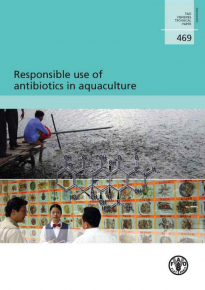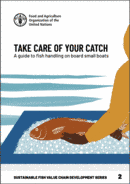Application of Appropriate Technology for Misuse of Veterinary Drugs
Technology associated with reducing or monitoring veterinary drug levels and other contaminants can assist in maintaining product quality and facilitate market access and trade, thus reducing food loss and waste (FLW).
Residue Testing
Residue Testing
Being able to test fish and shrimp for residue levels before it reaches market can help prevent product rejection and food safety concerns.
Aquaculture systems rely on high stocking densities and commercial feeds to increase production and profitability, which increase animal stress and susceptibility to disease. Veterinary drugs are commonly used to prevent and treat disease outbreaks. Several of these drugs are banned for use in shrimp farming in the United States. These drugs can be toxic to humans, with side effects that can be fatal. There is also an increased risk of developing antibiotic resistant strains of human pathogens, including Bacillus and Vibrio species. The Food and Drug Administration is responsible for the safety of all fish and fishery products entering the United States, but funding for testing is limited. Examples of drugs with high enforcement priority include chloramphenicol, nitrofurans, fluoroquinolones and quinolones, malachite green, and steroid hormones.
Commercial ELISA kits are simple, rapid, sensitive, cost-effective, and have shorter processing times. These advantages enable government agencies, seafood processors, and quality assurance organizations to detect drug residues in fish and shrimp matrices at the required sensitivities without complicated clean up steps.
Reduce Antibiotic Use
Reduce Antibiotic Use
In aquaculture, responsible conduct in the prudent use of antibiotics should be to reduce their use to therapeutic purposes alone; prophylactic use must be replaced by good husbandry practices, including adequate hygiene conditions and vaccination programmes.
In Norway, the decreased use of antibiotics is a result of good site selection, site rotation (one generation per site); improved production management; effective vaccines; strict veterinary control of all farms; strict rules for movement of live fish; and use of approved medicines.
Environmental Contaminant Control
Environmental Contaminant Control
State, tribal, local, or foreign authorities may use the federal tolerances or action levels to decide whether to issue local advisories to consumers recommending limits on consumption of all or certain species of locally harvested fish (some of which may be commercially important) or to close waters for commercial harvesting of all or certain species of fish.
Processors of seafood components and extracts may choose to control environmental chemical contaminants and pesticides at receipt (e.g., by screening raw materials). If contaminants in the raw material are present at unacceptable levels, processors may reject the product or choose to implement refining steps that reduce the contaminants to acceptable levels in the finished product. These steps may include distillation, absorption, and steam deodorization.
Key Publications
Detection And Confirmation Of Veterinary drug Residues In Commercially Available Frozen Shrimp The objective of this study was to quantify veterinary drug residues in commercially available frozen shrimp. | |
Responsible use of antibiotics in aquaculture This work focuses on antibiotics misuse and the concomitant threat of resistance development, considering this topic to be a public health concern that affects the population worldwide. | |
This study provides strategic orientations and recommendations for countries and suggests approaches for the World Bank’s role in a rapidly changing industry with high economic potential. |
More Resources
More Resources
31 October 2023














